
They eventually did this, and I was able to take some more shots of stints. However, the birds were disturbed quite frequently by a subadult White-bellied See Eagle. I never saw it make a serious attempt to catch any of the waders, but it seemed to delight in causing mayhem every time it appeared over the horizon. Perhaps it was experimenting with different ways to catch prey. I also saw it pick up a sizeable dead fish, but it dropped it after a minute or two and flew off.

Other disturbances are fortunately few. There are two or three stray dogs that scavenge along the shoreline on the falling tide, but they never come while I am on the mud. I guess they can smell me and are too timid to approach. So I feel that me being there is actually giving the waders chance to feed undisturbed by the dogs.
I photographed an adult Common Sandpiper catch a small crab not far from me. It held the crab by one leg and shook it till the leg broke off, which it then swallowed. The bird did this with each leg in turn, until the crab was completely limbless. Finally, it tossed the crab, caught it in mid-air, and swallowed it in one swift movement.
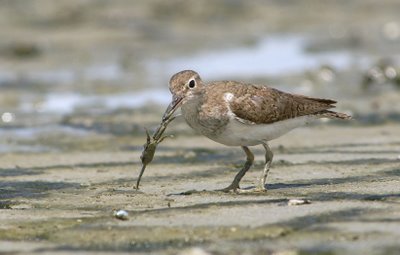

Another interesting thing caught my eye today. For some reason, the mud was particularly sticky on the falling tide. I saw it sticking to the bills of a number of waders, the stints in particular. Later on, when the stints were flying around, it would have been easy to mistake these muddy-billed individuals for Spoon-billed Sandpipers.
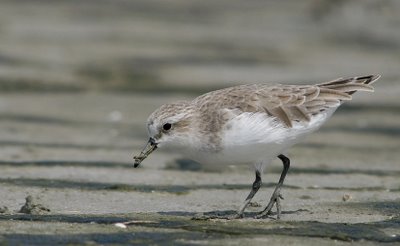
This adult non-breeding plumaged Red-necked Stint has mud stuck to its bill and legs. On the ground it's still obviously a Red-necked Stint ...
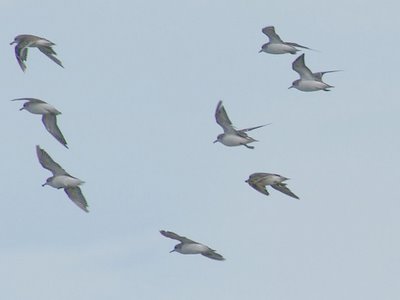
...but in flight, these muddy-billed birds can look at a glance like the extremely rare Spoon-billed Sandpiper (see birds top left, lower left and lower right)

Another shot of an apparently 'spoon-billed' Red-necked Stint (right hand bird)
With the eagle around, and as birds repositioned themselves at optimum feeding sites as fresh mud was newly exposed, there were plenty of opportunities for flight shots. My camera doesn't cope too well with birds in flight, but I got a few 'educational' shots!
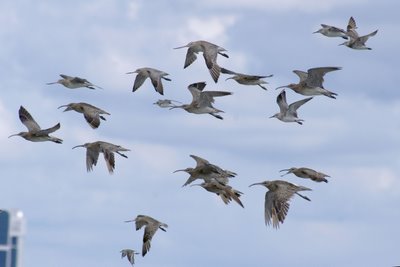
There are five species in this shot; Whimbrel, Bar-tailed Godwit, Great Knot, Red-necked Stint and a Sand Plover (not sure which species). It's always worth checking out waders in flight, as some are easier to identify when you can see their wings and rump. For instance, there are rarer subspecies of Whimbrel and Bar-tailed Godwit that have a brown rump and tail base
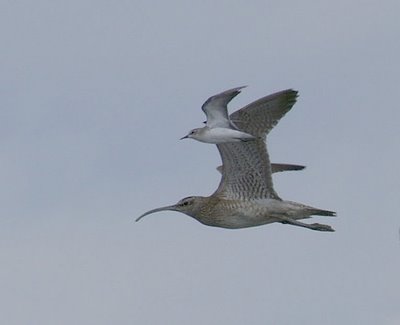
I like this shot just because it highlights the huge variety of shorebird shapes and sizes. This Red-necked Stint looks like a tiny WW2 fighter plane flying alongside a lumbering bomber (actually a Whimbrel; the contrast if this were a Eurasian Curlew would be even greater!)
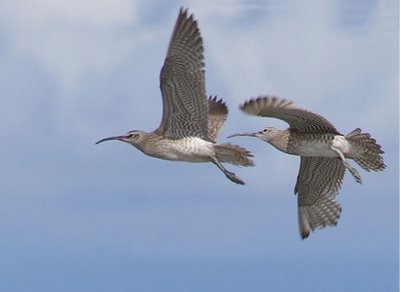
A couple of Whimbrel to end with.
No comments:
Post a Comment